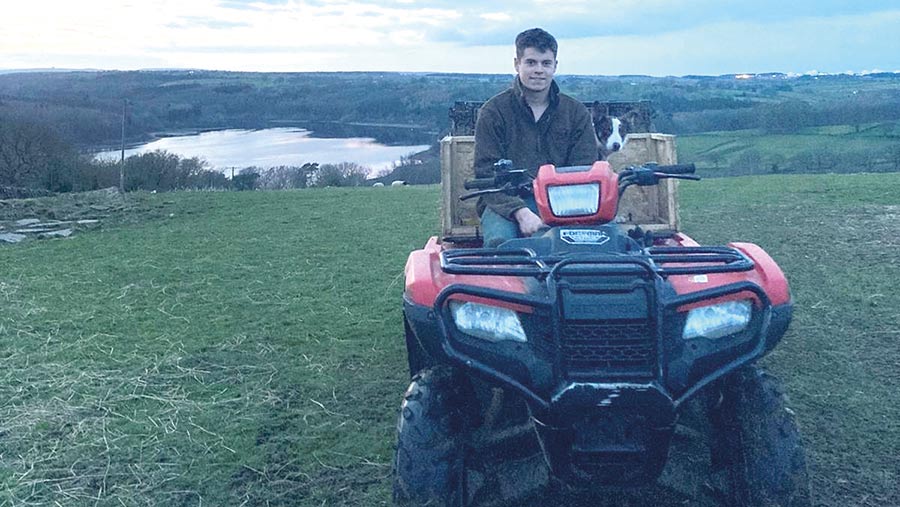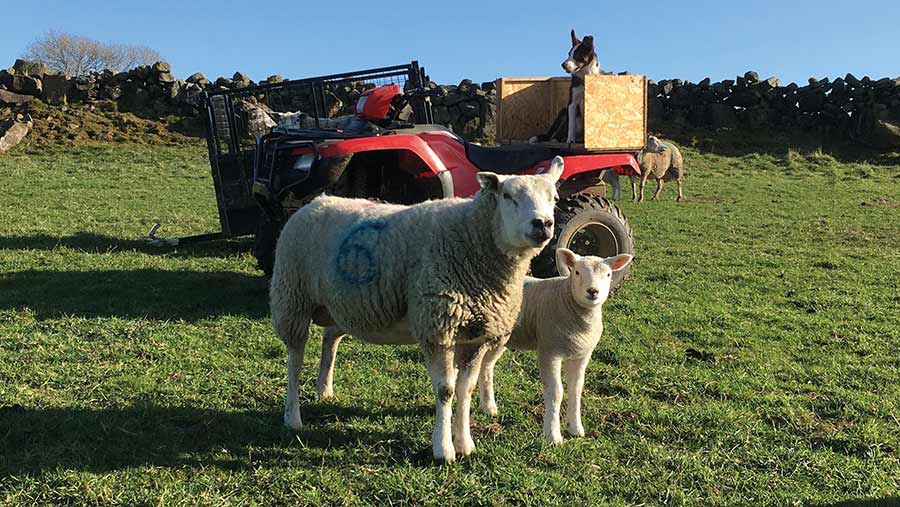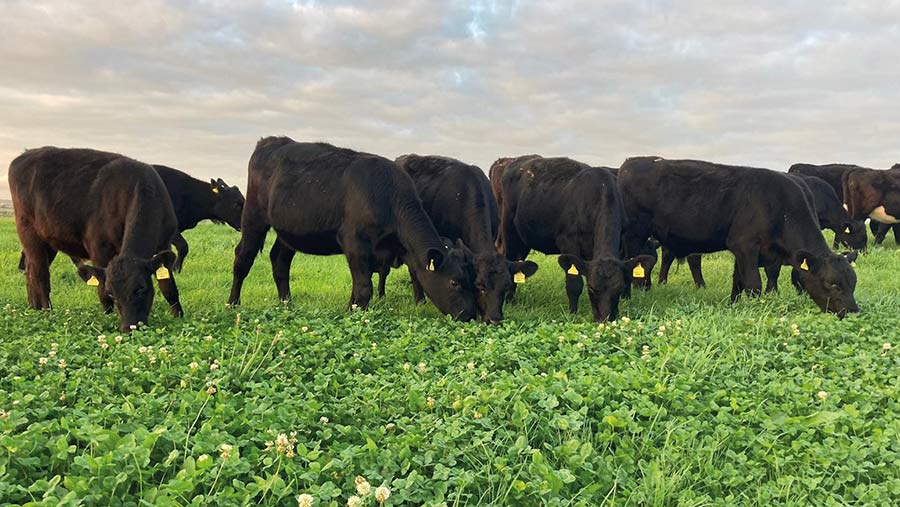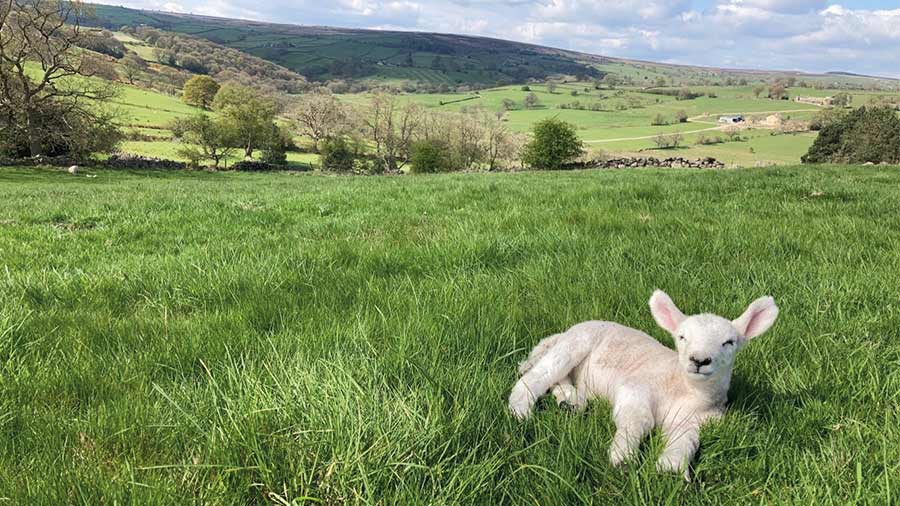Young farmer has steep learning curve in tenancy first year
 © Robert_McAneney
© Robert_McAneney A year on from securing a farm business tenancy in Yorkshire, young farmer Robert McAneney has tripled ewe numbers and switched from indoor lambing to an outdoor system.
Mr McAneney was 23 when in 2021 he took on the five-year tenancy at Scow Hall Farm, near Otley, a Next Generation opportunity offered as part of the county’s second-largest landowner Yorkshire Water’s Beyond Nature scheme.
In the intervening 12 months he has developed sheep and cattle enterprises on the 208-acre holding.
See also: Find out average farm rents where you live 2022
Farm facts
- Texel x Beltex tups with Blue Faced Leicester tups used to produce Cheviot Mule replacements
- Tups turned in with ewes for two weeks on 30 November; teasers used beforehand
- Loam and clay soils
- 160 tonnes of calcium lime spread to address low soil pH
Lambing lessons
In the first lambing season, ewes were housed, but their health was not great, hindered by the warm spring; there was a 15% incidence of lameness, plus 18% of ewes and 12% of lambs succumbed to eye health issues.

© Robert_McAneney
As a consequence, he introduced outdoor lambing for 2022, shifting the lambing start date from 1 March to 25 April, while increasing ewe numbers from 60 to 180.
“The dry conditions have been perfect for lambing, the ewes and lambs are doing really well,” Mr McAneney says.
This change has not only improved animal health and welfare, but has captured considerable savings on feed and bedding.
In 2021, he lambed 123 ewes and his spend on concentrates was £8/ewe and £2.92/ewe on straw – this year he has none of those costs.
The only downside to outdoor lambing could be a higher mortality rate and income from lamb sales coming later in the year.
The flock scanned at 146% ahead of the 2022 lambing season, lower than he had hoped, but he puts it down to having an older flock: most ewes are four- and five-year-olds.
Mr McAneney has opted for a Cheviot Mule flock, a hardy breed which suits the farm’s aspect at 200m above sea level, as well as being good mothers.
Setting up the new system hasn’t been without cost – investment in grazing infrastructure was around £1,500 – but it was a one-off expense.
Labour requirement is higher too because the stock are rotationally grazed and moved daily.
All lambs are finished on grass and sold at Wharfedale Farmers Auction Mart or Skipton Market at 42-45kg liveweight.
Cattle rearing
Another income source is a cattle rearing contract with Pathway Farming. Mr McAneney has 100 cattle on the farm at any one time, arriving twice a year as a group of 50 four- or five-month-old weaned calves, leaving seven months later to be finished.
Cattle are winter housed and at grass during the grazing season. “We have electric fencing for cattle too but we only need half the amount of posts compared to the sheep and a single strand of wire,” Mr McAneney says.

© Robert_McAneney
At housing, cattle receive 2.5kg/head a day of concentrates and 0.5kg/head a day at grass.
The cattle are the most profitable enterprise, but he believes sheep might provide the bigger margin going forward because of rising feed costs.
He eventually hopes to expand sheep numbers to 250 ewes, and also plans to have his own cattle – he recently bought three English Longhorn cows and will build numbers by retaining heifers and selling steers through meat boxes.
He also wants to be self-sufficient in feed, by producing high quality grass through overseeding with clover and herbal mixes and using farmyard manure to enhance soils.
No fertiliser or pesticides are used on the farm, a stipulation in the tenancy agreement due to the farm being in the catchment area for the Swinsty reservoir.

© Robert_McAneney
Business advice
It has been a steep learning curve, running his own business after having employed positions, but he has been given advice from other farmers and, through Yorkshire Water’s scheme, his mentor Neil Pickard.
“His advice has been really helpful, especially with writing the business plan for the bank and applying for grants,” Mr McAneney says.
Through that guidance, Mr McAneney has registered for the Sustainable Farming Incentive scheme and secured a woodland creation grant, with a small area of woodland created on land which borders two streams; this has allowed those watercourses to be fenced off from livestock.
He also invested in a sheep handling system aided by the Countryside Productivity Small Grant scheme.
The business plan also helped him get a bank loan and overdraft facility.
For Mr McAneney, the best part of the tenancy opportunity comes from working for himself. “You get out of it what you put in,” he says.
And the most challenging? “Definitely the amount of paperwork! When you are employed you have no idea what it takes to run a business.”
